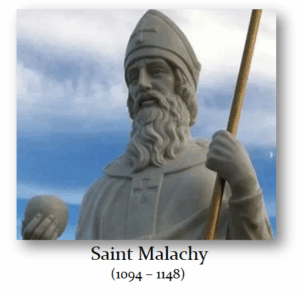Exploring the Prophecies of the Papacy and the Future of Religion: Insights from Extreme Investor Network

As we step further into the 21st century, the intersection of religion, prophecy, and socio-political change becomes ever more poignant. Recent discussions surrounding the Prophecy of Saint Malachy, Pope Francis, and what lies ahead provide fertile ground for contemplation. Here at Extreme Investor Network, we delve deep into these topics, not just to observe, but to understand their economic implications and potential future trajectories.
The Prophecy of Saint Malachy: Insights and Predictions
Is Pope Francis Really the 112th Pope?
The prophecy attributed to Saint Malachy outlines a stunning forecast of only 112 popes before the Last Judgment, a claim that has sparked debates among theologians and historians alike. Pope Francis, with his papacy expected to conclude around 2025, has been considered by some as the 112th pope. His role has become especially intriguing in light of claims that he might not fulfill the prophecy’s final designation of “Petrus Romanus” (Peter the Roman).
Historically, the records suggest that Pope Benedict XVI was designated as the 111th pope, leading to Francis’s status as 112th. However, many question whether Benedict’s resignation complicates this numbering, as popes traditionally serve until death. The implications of such interpretations could be significant for how we view leadership within the Catholic Church.
Future Shifts in Leadership?
Anticipations of a shift in the papacy in May 2025 coincide with global unrest and spiritual discontent. With Europe’s geopolitical landscape becoming increasingly tumultuous, it begs questions about the connection between spiritual matters and worldly events. Could prophecies such as the Third Secret of Fatima infer a renaissance or upheaval within the church, particularly given its portrayal of persecution among clergy?
Interestingly, this all comes against a backdrop of current betting odds highlighting figures like Pietro Parolin and Peter Turkson as potential candidates for the next papacy. Each contender’s nomination carries its own interpretation of what “Peter the Roman” indicates about future directions for the Catholic Church.
Economic Cycles and Religious Evolution
The cyclical nature of religion, intertwined with economic phases, hints at a broader pattern of disruption. As discussed in our earlier pieces, major revolutions in religious thought—be it the rise of Christianity or the subsequent schisms—often coincide with shifts in power dynamics and economic conditions.
With the next significant upheaval in religious thought anticipated around 2032, understanding the relationship between religious cycles and economic foundations becomes essential. The events triggered by leadership changes likely have roots deeper than mere theology, tapping into the economic climates that foster change.
Historical Context: Lessons from the Past
Our exploration must also acknowledge history, where religion and economics historically conspired for power plays. Figures like Henry VIII not only reshaped religious landscapes but did so under the heavy influence of financial desperation. Similarly, Napoleon’s seizure of church assets serves as a reminder that spiritual authority often has a palpable economic dimension.
As we contemplate the Sainthood of leaders and the interpretation of prophecies, we must remember that the momentous shifts we’ve witnessed in religion frequently follow societal upheaval and changing economic realities.
At Extreme Investor Network, we provide not just analysis but insight into how these complex religious landscapes may evolve in tandem with economic conditions. As we approach a period of expected transformation, being aware of the cyclical history of religion and the prophecies surrounding us may assist investors and strategists alike in navigating the uncertainties ahead.
Stay tuned for more unique insights and analyses that connect the dots between economics and prophecy in our ever-changing world.

